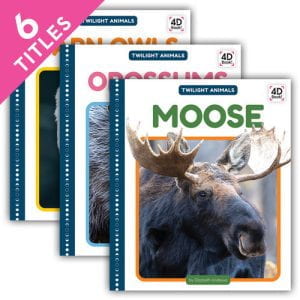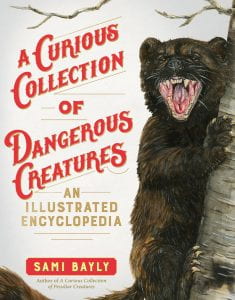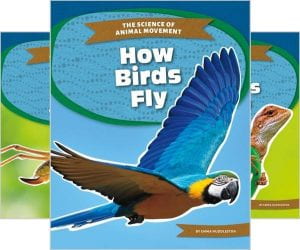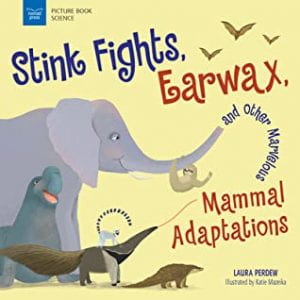 Andrews, Elizabeth. Twilight Animals. ABDO Books, 2023. 24 p. $21.95 ea. $131.70 Set of 6. Grades K-2.
Andrews, Elizabeth. Twilight Animals. ABDO Books, 2023. 24 p. $21.95 ea. $131.70 Set of 6. Grades K-2.
Barn Owls. 978-1-098-24205-3.
Bears. 978-1-098-24206-0.
Bobcats. 978-1-098-24207-7.
Moose. 978-1-098-24208-4.
Opossums. 978-1-098-24209-1.
Skunks. 978-1-098-24210-7.
This reviewer had the opportunity to read Opossums. Opossums are some of nature’s most unique twilight animals. As the sun sets, opossums ready themselves for an evening of eating. They eat anything from insects to vegetables, trash, roadkill, and even poisonous snakes and ticks. This title highlights additional facts about these unique nocturnal animals, including information about their physical characteristics, habitat, and behavior. Large, colorful photographs showcase opossums in their natural surroundings and highlight features such as their paws, ears, and tail. QR codes sprinkled throughout the book offer access to digital resources such as a PBS video about opossums, information about other marsupials, and activities like a word search and a maze. Backmatter includes a section titled “Making Connections” that challenges readers to make text-to-self, text-to-text, and text-to-world connections about opossums. Additional text features include a Table of Contents, Glossary, and Index.
THOUGHTS: This eye-catching title will draw in the youngest nonfiction fans, and the QR codes add an additional dimension to the title’s simple text. This book will work well for units featuring nocturnal animals or discussions about marsupials or omnivores.
598-599 Aves (Birds), Mammalia (Mammals)





